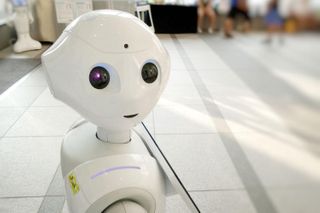- Universities around the world face a challenge with popularization of the use of ChatGPT and other tools that use artificial intelligence to create believable texts or realistic images
- UVic-UCC works to implement this tool in classrooms from an ethical point of view that is consistent with university teaching
The popularization of artificial intelligence (AI) tools has led to the creation of a new paradigm in university teaching and assessment. The ability of AI to construct coherent texts with mostly truthful information, which has emerged recently, poses urgent challenges to the university and forces it to formulate questions that need answers: Is the current model of assessment still valid? Is the use of AI in academia fair? To what extent can this tool help expand students’ knowledge or interfere with their learning process?
Although there are different types of applications and companies, ChatGPT is the best known text generator today. It describes itself as a language model based on the GPT-3.5 architecture created by OpenAI that it says can “process, generate and understand natural language in various tasks, including machine translation, text summarization, question answering and generation of creative text, among others.” The tool is fed by a huge database to learn and constantly improve its texts, from which it generates the answers to users’ questions or proposals.

ChatGPT explains that it does not have a complete understanding of the world or the social and cultural context, which is why, it warns, it can produce answers that are “inaccurate, inappropriate or offensive in certain contexts or situations”. Nor does ChatGPT hide that it cannot work beyond the texts it already knows beforehand and it acknowledges that “it does not have the ability to discern the veracity or morality of the questions or answers it receives.” Therefore, it warns users that, once it has been given a specific text assignment, it is quite possible that the result provided, no matter how well structured it is, is not truthful or based on real facts.
“There are opposing views among teaching staff and a lot of uncertainty about what the institutional position should be”
Artificial intelligence in classrooms: an old familiar
The use of artificial intelligence in classrooms is nothing new. An example is the Copilot tool, which is based on AI to help students to program. It is already a common support element in coding courses. Other elements are the resources used in text correction or translation. But these elements are far from the new reality that ChatGPT opens up, acknowledged Ramon Reig, assistant for Academic Affairs in the Office of the Vice-Rector for Academic Affairs of the University of Vic - Central University of Catalonia (UVic-UCC). According to Reig, the debate that is opening up is diverse and complex. In this debate, issues must be addressed that are far ranging but also intertwined, such as the effectiveness of the tool, the uses it can have in teaching, the impact on assessment systems and the ethical dimension of its presence in classrooms, among other aspects.
And there are no clear answers to it all. "Some university teachers have opposite views and there is a lot of uncertainty about what position the university institutions should adopt,” agreed Jordi Conca, director of Business studies at the Manresa Campus of the UVic-UCC, and Gerard Soler, head of Information Systems on the same campus. The rapid popularization of the new AI model has led many universities, including UVic-UCC, to create working groups and form spaces for debate to analyse and discuss the use of this type of artificial intelligence in the classrooms.

In teaching, artificial intelligence like ChatGPT is a double-edged sword. On the one hand, stated Ramon Reig, “it opens the door to new opportunities and ways of learning and teaching.” It can help to shorten search processes, allows you to automate aspects such as spelling and grammar, and contributes to looking for inspiration or ideas when more artistic tasks are addressed.
However, the quality of its results is very questionable: “If the tool has a wide range of sources, it will probably provide correct information in response to your questions, but when this range of sources does not exist, the answers tend to be wrong,” he stated. Reig considered that turning your back on the tool would be a mistake: “We need to know when it makes sense to use it and when it does not, and to adapt to the technological tools that are emerging, because AI will be present in the students’ professional future, whether we like it or not.”
“Artificial intelligence will be present in the professional reality of students”
Rethinking assessment
Academic assessment is one of the areas that has generated the most concerns and doubts following the popularization of ChatGPT. The use of the tool eliminates the effectiveness of assignments and exams as an instrument to determine whether a student has gained the required knowledge, and understood and assimilated it to be able to apply it in the future.
Ariel Guersenzvaig, director of the master’s degree in Design and Management of User Experience (UX) and Digital Services at the Elisava Faculty of Design and Engineering, considers that we should rethink assessment systems, not to avoid pitfalls but because “technologies like this one might be present in our day-to-day life in the future and therefore traditional methods will directly cease to make sense.” At the same time, he is cautious: “Right now, ChatGPT has to be taken for what it is, a developing technology that exists, but doesn’t solve any real problems,” he stated.
In the same vein, Judit Bort, coordinator of final year projects at the Faculty of Health Sciences and Welfare of the Vic Campus noted: “It is not the job of teachers to be police officers and spend their time looking for fraudulent work. Rather, it is time to rethink how we evaluate academic projects.” Changes have already begun to be made this year, such as more thorough monitoring of students who are doing their final project to “put more emphasis on critical and reflective competencies, and to establish supervision and support mechanisms.”

Ethics applied to new technologies
This exercise in critical thinking is also key for Maria Forga, professor of Ethics at the Faculty of Business and Communication Studies on the Vic campus. It may seem that technological literacy is unnecessary for the new generations of digital natives, but they too need to be taught how to use technology and to do so with a critical approach in classrooms and other personal or professional settings. “It is not only necessary to learn how to use ChatGPT from a functional point of view, it is also important to have the judgment and awareness that allow optimal use of this tool,” stated Forga. According to her, “you need to know how to obtain knowledge and, at the same time, detect lies and falsehoods.”
We need to explore AI and learn about it to train a student body that is ready to employ it
“We have to go beyond how AI affects the dynamics of the class or the exercise of marking, and consider that when students enter the job market, they will work with the AI that is available to them and will have to know how to use it responsibly,” said Maria Forga. For this reason, AI should be incorporated it in a cross-cutting way in all the subjects that are taught and teachers should be trained in it.
Similarly, Elisabet Sarri, teacher at the Faculty of Medicine and coordinator of the cycle of this degree, noted: “We have not yet seen students’ indiscriminate use of the information accessible on the internet. We must address tools that organize this information, rigorously or not, and present it with correct language in terms of structure, grammar and spelling.” Sarri emphasised the need to equip students with criteria so that they know how to analyse this information critically.

ChatGPT: A new way to go
Despite the many doubts raised by the arrival of ChatGPT, there is one issue on which there is consensus. The use of this tool will be widespread in the future and, at the university, it will be extensively used to complete academic work, search for information and generate content. The question, therefore, is not whether to integrate it, but how to do so. And the answer points to responsibility, common sense and a critical eye.
Marcos Cánovas, professor at the Faculty of Education, Translation, Sports and Psychology, explained this in the article “Com afecta ChatGPT a l’ensenyament de llengües aplicades, traducció i edició de textos?” (How does ChatGPT affect the teaching of applied languages, translation and text editing?), published in The Conversation in May: "Technologies without ethics are devastating. The ethics of AI must be integrated into the professional ethics inherent in university training.” In addition, he affirmed, “creativity in a human way is not yet within the reach of machines. In other words, AI is an intelligence that processes, but does not think.”
In addition, he affirmed, “creativity in a human way is not yet within the reach of machines. In other words, AI is an intelligence that processes, but does not think”
"The constant improvement of technology will make, in the not-too-distant future, a text generated by AI indistinguishable from one that was created and drafted by a person", explains Cánovas. Experts agree that, just as the Internet revolutionized teaching, technological evolution will also keep affecting it. Similarly, there is a quorum about the importance of ethics throughout this process, as Cánovas concludes in his article: "An ethical orientation in the application of technology will be key to integrating artificial intelligence into classrooms as a tool of guidance, improvement and reinforcement of teachings."